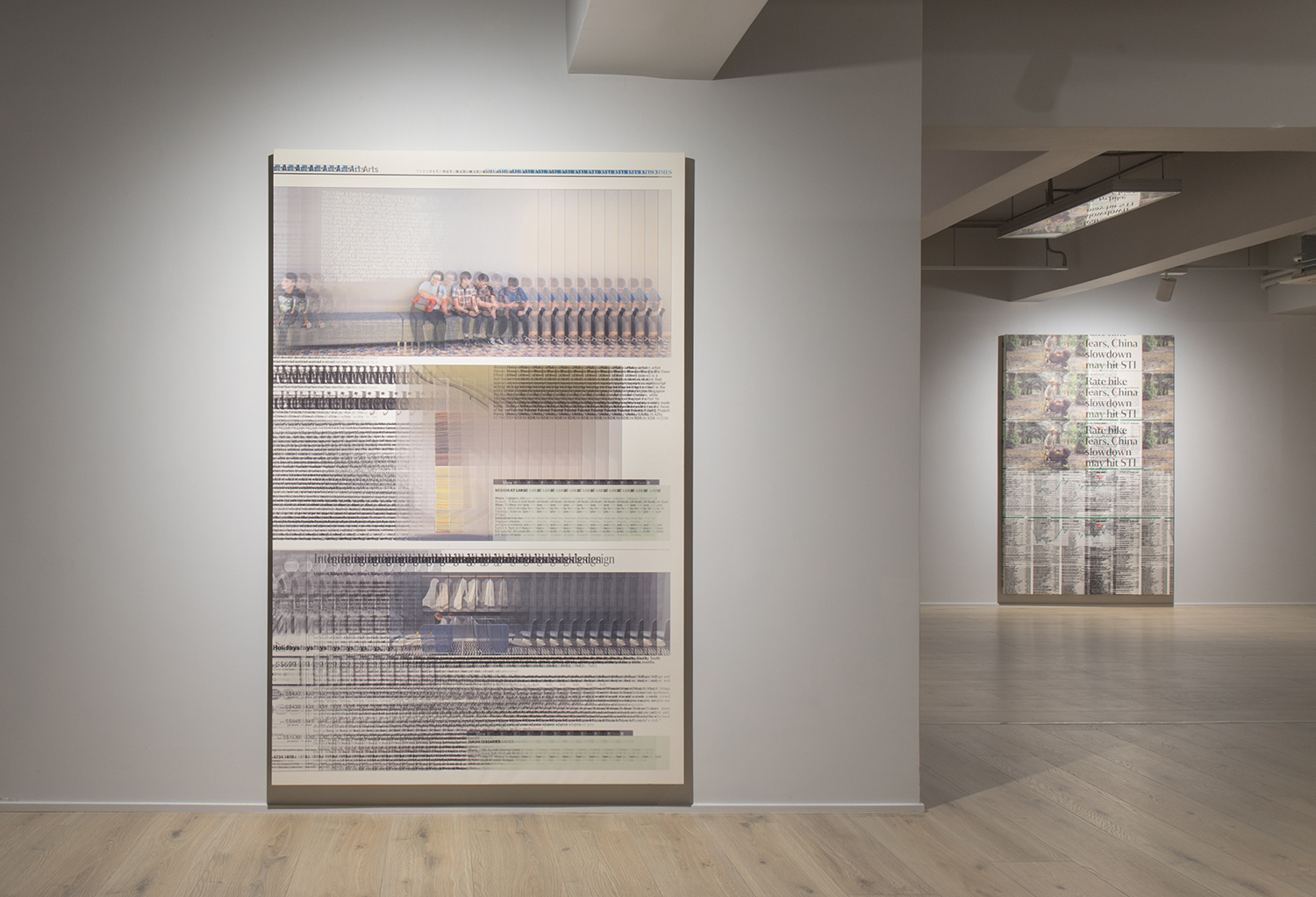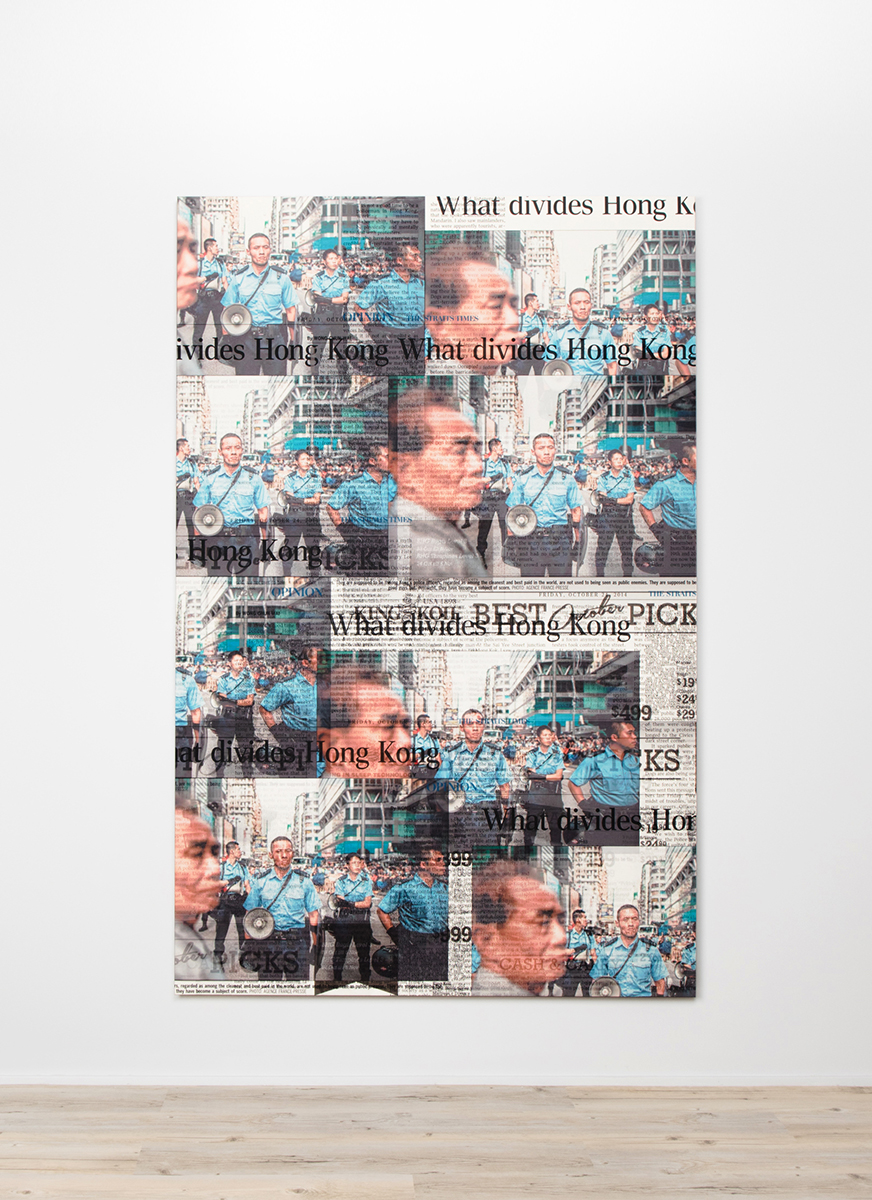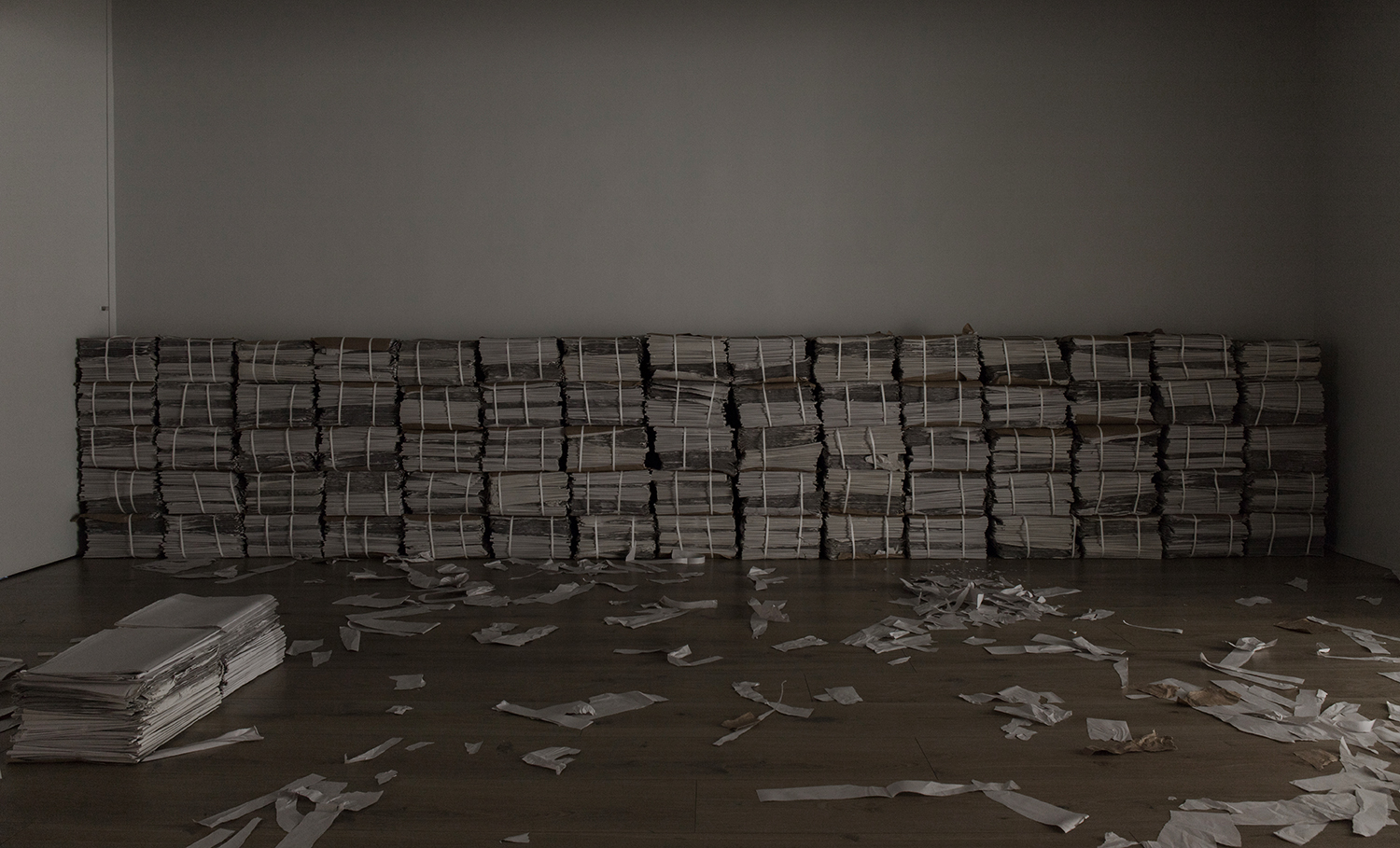Shows
Heman Chong’s “Abstracts from The Straits Times”


Objectivity is a myth. Or, at least, so we can glean from the works of Singapore-based artist Heman Chong, displayed in his exhibition “Abstracts from The Straits Times” at Rossi & Rossi gallery, Hong Kong. Following a decade-long study into the relationship between text and image, Chong’s latest investigation revolves around news articles, which purportedly offer the unadulterated truth and a neutral worldview. With a contest being waged between platforms delivering “fake news”—a now familiar accusatory term—and those claiming to report facts, perhaps it is worth examining the question of objectivity now, more than ever.
Chong started by consulting the Straits Times—the almost singularly authoritative platform in the country where he lives and works—choosing to center his project on the newspaper when he discovered a cache of its print-ready PDFs on a hidden website. The archive, comprising thousands of these files, provides an alternative, illicit channel through which information can be consumed—all the more reason for Chong to mine the site as his own source. All of the works in the exhibition were created through a digital process of cutting and pasting elements from these PDFs. In The Straits Times, Monday, August 10, 2015, Page C7 (2018), the artist references his source by leaving in green crop marks—commonly seen in the output PDFs of print publications—which are multiplied through his manipulation, and transformed into a motif within an overwhelmingly cluttered panel of abstracted headlines, stock charts, and columns of indecipherable text and image.

This transformation of overt content into purely visual forms allows the artist to illustrate and critique how seemingly neutral Straits Times articles are loaded with meaning. In The Straits Times, Thursday, September 16, 2010, Cover (2018), the artist contrasts two striking formal components, each rendered in a single primary color that provides an unmistakable emotional cue: a cheery, cheesy-yellow McDonalds advertisement and a glaring, warning-red photo of a terrorist attack defense simulation by the Singaporean army on the country’s National Day. The two are equally dominant in scale and, thus, brought on par with each other, alerting viewers to the way that the messages behind images promoting fast food versus national defense are similarly received. Despite the immense difference in the seriousness of their respective subject matter, both images are designed to appeal to a population accustomed to spoon-feeding and instant gratification. Commenting on the state of tension between the representation of a personal versus collective voice is the red ticker tape for stomp.com, a Singaporean website that encourages citizen journalism by soliciting reports from passersby who may have witnessed random, violent acts of crime. For the artist, the significance of this is in the title of the site, which eerily recalls a quote from George Orwell’s dystopian novel, 1984: “If you want a picture of the future, imagine a boot stomping on a human face—forever.”
Orwell’s provocation is evoked in Chong’s work through repetition. In The Straits Times, Friday, October 24, 2014, Page A26 (2018), this brings to the fore the strangeness of the report on Hong Kong’s Umbrella Movement, which begins: “Hong Kong police are among the cleanest in the world…” as well as the fact that in the image that accompanies the text, only the heroic representatives of order are present, with the protestors on the other side of the clashes blatantly missing. Repetition functions elsewhere in the collages as a means to highlight the sensationalism of violence employed in the publication, such as in The Straits Times Tuesday, June 12, 2012, Page A8 (2018), which features a wailing girl among other Rohingya refugees. The impenetrable densities of the overlapping words and ghostly doubles of the depicted figures further illustrate the way propaganda works—any semblance of truth is easily lost, if not between the first and second iterations of the same content, then between the second and third.

Mounted in a dark back room of the gallery was an installation that contrasts with the visual abundance of the canvas panels. Endless (Nights) (2016) comprises 10,000 sets of blank pages, cut to size and folded into sections, mimicking the Straits Times. The lack of light enables visitors to focus on the physicality of the paper over the aesthetics, and also evokes the conditions when newspapers are delivered in the early hours of the day. The work’s title refers to the fact that it is illegal in Singapore to touch the papers until 6:30 in the morning, and thus the access to information being controlled by a single authority, even in the most basic, physical sense. Although the artist emphasized that visitors are free to interact with the installtion however they wanted, the only moment of didacticism in the whole show came with the shredded pieces of newspaper on the floor, which provided a specific prompt—something the works otherwise deliberately eschewed by their abstract forms.
While objectivity might remain evasive, the value we pin on it suggests that there will always be counternarratives to the myths of the post-truth era.

Chloe Chu is the associate editor of ArtAsiaPacific.
Heman Chong’s “Abstracts from The Straits Times” is on view at Rossi & Rossi gallery, Hong Kong, until March 31, 2018.







